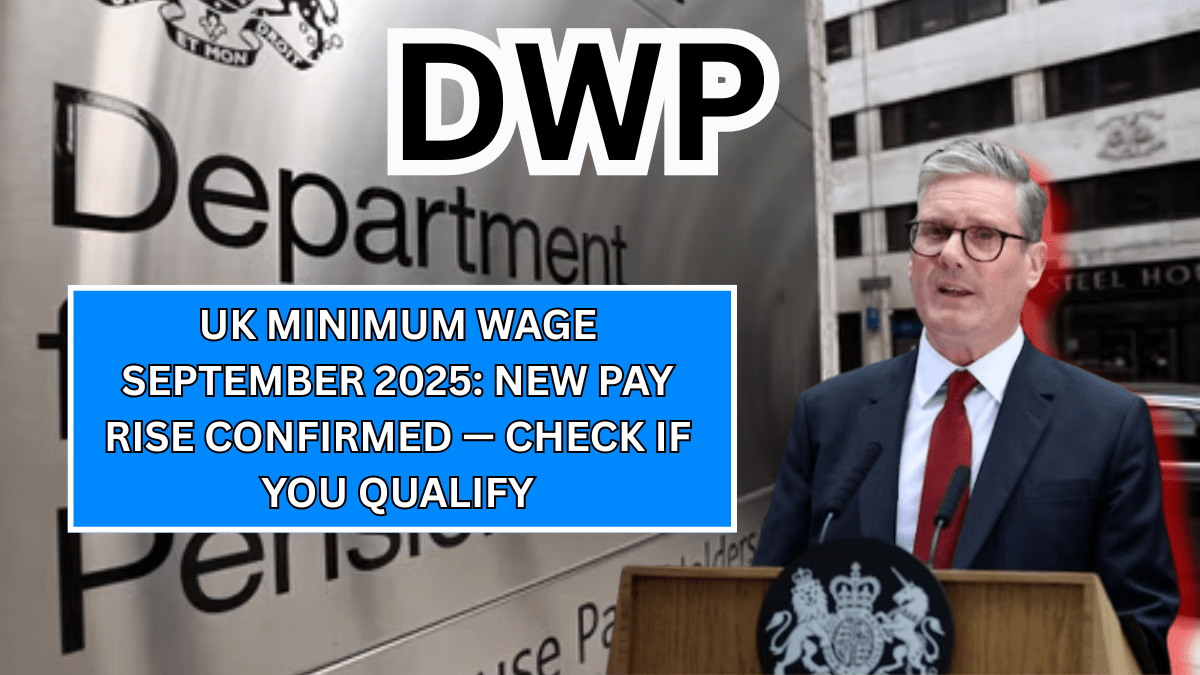The cost of living pressures have kept wages in sharp focus across the United Kingdom. Following an increase in the statutory National Minimum Wage (NMW) and National Living Wage (NLW) in April 2025, several large employers have confirmed further pay rises that will take effect from September 2025.
If you are a worker, apprentice or employer, it is important to understand what these changes mean, who qualifies, and how to ensure you are receiving the correct pay. This article explains the latest developments in a straightforward way and provides links to official government resources where you can double-check your eligibility.
The April 2025 Statutory Increase
The UK Government reviews minimum wage rates each year, usually on 1 April. Earlier in 2025, the National Living Wage (covering most workers aged 21 and over) rose to £12.21 per hour. This was one of the largest increases in recent years and was designed to keep the NLW close to two-thirds of average earnings, as recommended by the Low Pay Commission.
The new April 2025 rates are:
- £12.21 per hour – National Living Wage (age 21 and over)
- £11.07 per hour – 18 to 20 year-olds
- £6.92 per hour – 16 to 17 year-olds
- £6.92 per hour – Apprentices (under 19, or in the first year of an apprenticeship)
What Changes in September 2025?
While statutory minimum wages only change once a year in April, many private employers have announced additional pay rises effective from 1 September 2025. This means that staff working in sectors such as retail, supermarkets and logistics may see their hourly pay rise above the statutory minimum.
For example, major supermarkets and retail chains have confirmed that entry-level pay will increase in September to remain competitive in attracting staff. Although these rises are not government-mandated, they are legally binding once written into an employee’s contract.
For workers, the message is simple: if you are employed by a company that has announced a September pay review, you should see your new rate appear on your September payslip.
Who Qualifies?
Eligibility for the statutory UK minimum wage September 2025 depends on:
- Your age – the National Living Wage applies if you are 21 or older. Younger workers receive the National Minimum Wage for their age band.
- Apprenticeship status – if you are under 19 or in the first year of your apprenticeship, you are entitled to the apprentice rate.
- Employment status – you must be classed as a worker. This usually covers employees, casual staff, agency workers and zero-hours workers.
Importantly, you are still entitled to the minimum wage even if you are:
- Paid per task rather than per hour
- A part-time or casual worker
- On a probationary contract
How to Check if You’re Being Paid Correctly
Mistakes can happen, especially if you are on a variable-hours contract or your pay includes deductions. Here are simple steps to check your pay:
- Use the minimum wage calculator – The government provides a National Minimum Wage and Living Wage calculator to check if your pay meets the legal minimum.
- Review your payslip – Divide your gross pay by your hours worked to find your effective hourly rate.
- Compare with the official rates – Match your hourly rate with the minimum wage table for your age group.
- Check company announcements – If your employer announced a September 2025 increase, confirm the new rate in writing or via HR.
What to Do if You Are Underpaid
If you discover that your employer is not paying you the legal minimum:
- Raise the issue directly with your employer or HR team.
- If the issue is not resolved, you can get free advice from ACAS.
- You can also report underpayment directly to HM Revenue and Customs (HMRC), which enforces minimum wage law. Reports can be made anonymously via GOV.UK’s enforcement service.
Employers who fail to pay the correct minimum wage can face fines and public naming by HMRC.
Why September Matters
The September 2025 pay rises highlight an important point: while the statutory UK minimum wage September 2025 is unchanged until April 2026, many workers will benefit from company-led wage increases in September. This trend reflects the competitive labour market, where businesses are keen to retain staff by paying more than the legal minimum.
For workers, this means two opportunities to see wages increase:
- The annual government uprating every April
- Employer-announced pay rises, which may fall in September or other times of the year
conclusion
The UK minimum wage September 2025 story is a reminder that pay rates come from two sources the government’s legally binding annual increases and employer-led adjustments. Workers should not assume that a September rise is automatic; instead, they should check their employer’s announcements, review their payslip, and confirm that they are being paid at least the legal minimum.
Nand Kishor is a content writer covering business, economy, and world affairs. With a background in journalism, he focuses on clear, ethical, and insightful reporting. Outside of work, he enjoys chess, cricket, and writing short stories.
